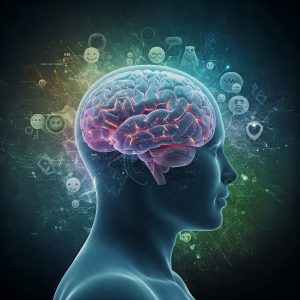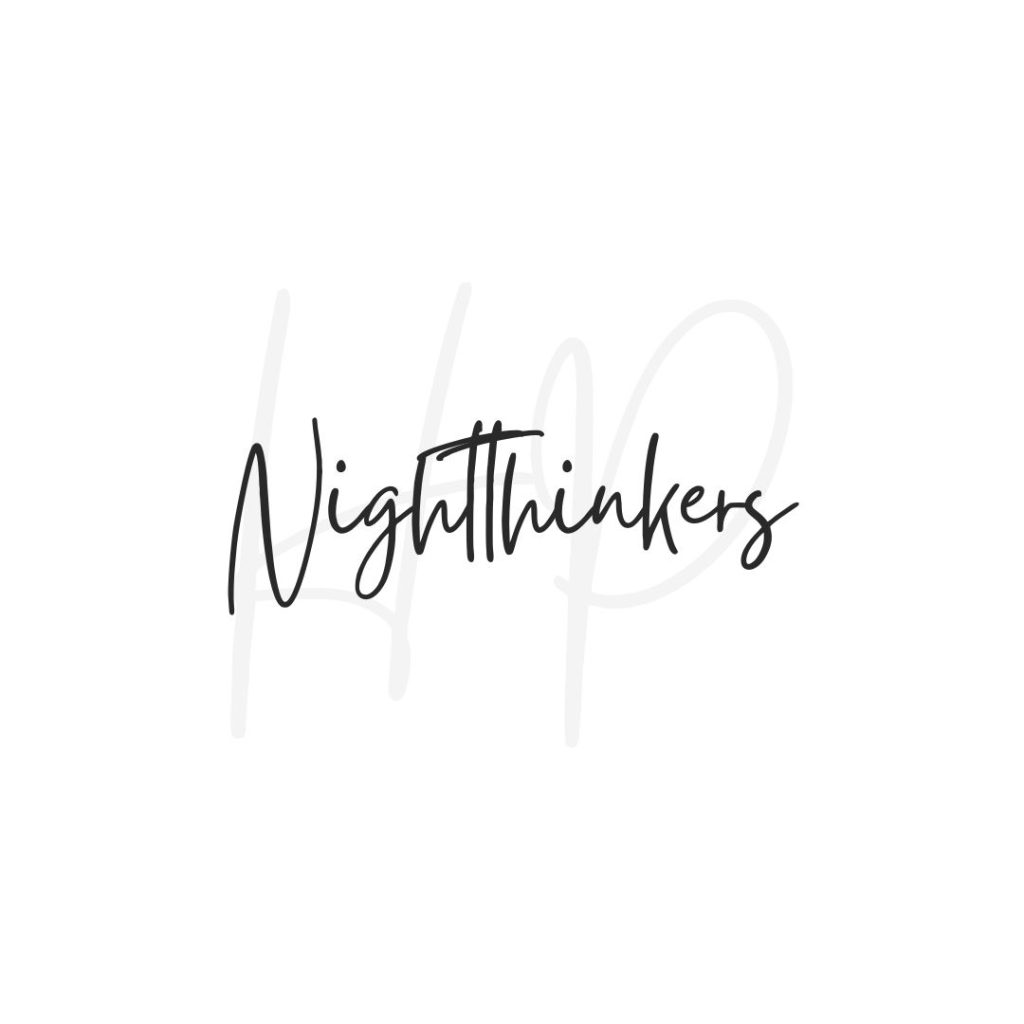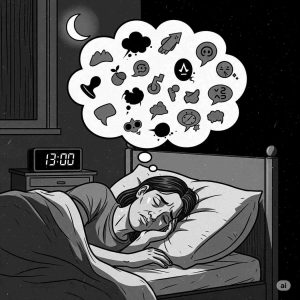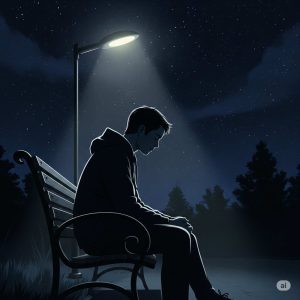What Is NightThinkers?
Introduction: Who Are the NightThinkers?
In a world that largely operates on a 9-to-5 schedule, there exists a quiet counterculture of minds that awaken with the stars. What Is NightThinkers? These individuals, often referred to as “night thinkers” or “NightThinkers,” thrive mentally and emotionally during the dark hours. Whether fueled by creativity, introspection, or sleepless rumination, NightThinkers see the nighttime not as an end to the day—but as a portal to clarity, depth, and vision.
This article explores the concept of NightThinkers from various angles: psychological, neurological, philosophical, and cultural. Why do some people feel.What Is NightThinkers? Most alive and mentally active when the world sleeps? What does science say about nighttime creativity? How has this phenomenon shaped history, art, and thought?
Part 1: The Psychology of Night Thinking What Is NightThinkers?
-
Definition of the NightThinker: more than just a night owl.
-
The internal monologue: why thoughts intensify at night.
-
Emotional processing: how nighttime allows for emotional clarity.
-
Nighttime as a form of solitude and personal freedom.
-
The “3AM thoughts” phenomenon and its psychological underpinnings.
Part 2: The Science of the Mind After Dark What Is NightThinkers?
-
Circadian rhythms and chronotypes (night owls vs morning larks).
-
The brain’s behavior at night: reduced sensory input, heightened imagination.
-
Neuroscientific studies on problem-solving during quiet hours.
-
The paradox of insomnia and creativity.
-
Brain chemistry and hormone fluctuations during nighttime hours.
Part 3: NightThinkers in History and Culture What Is NightThinkers?
-
Philosophers and thinkers known for their nocturnal routines (Nietzsche, Freud, Virginia Woolf).
-
Writers, artists, and musicians who created their greatest work at night.
-
The role of darkness in mythology and spiritual traditions (dreamwork, moon rituals).
-
The portrayal of night thinking in literature and film.
-
Modern examples: tech innovators and entrepreneurs who use the night for deep work.

Part 4: NightThinking and Creativity
-
Why the night fosters divergent thinking and innovation.
-
The connection between silence and imagination.
-
Case studies of artists, poets, and coders What Is NightThinkers? who work best at night.
-
The link between dreams, the subconscious, and nighttime insight.
-
How to use the night intentionally for creative breakthroughs.
Part 5: The Philosophy of NightThinking
-
The symbolic power of darkness: introspection, existentialism, and shadow work.
-
Night as metaphor for the inner world.
-
Eastern and Western philosophical interpretations of night and silence.
-
The existential weight of night: solitude vs loneliness.

Part 6: The Challenges of Being a NightThinker
-
Sleep disorders and their impact on health.
-
Navigating a society that values early rising.
-
Emotional toll: overthinking, anxiety, and isolation.
-
How to maintain balance between night creativity and day responsibilities.
Part 7: Embracing the NightThinker Identity
-
How to build a healthy nighttime routine.
-
Tips for productive and mindful night thinking.
-
Journaling, meditation, and night walks as tools for introspection.
-
Building a personal philosophy around nighttime clarity.
-
Connecting with a community of fellow night thinkers.
Understanding the “Night Thinker”
A “night thinker” is someone who engages in deep thought, reflection, or creativity during the night. This period often provides a tranquil environment, free from daytime distractions, allowing for uninterrupted contemplation. As Jennifer Niven aptly describes, “I do my best thinking at night when everyone else is sleeping. No interruptions. No noise. I like the feeling of being awake when no one else is” .
Psychological and Biological Perspectives
From a biological standpoint, individuals have varying chronotypes, which are natural preferences for being active at certain times of the day. “Night owls,” or those with an evening chronotype, tend to be more alert and productive during the night. This inclination can be attributed to genetic factors and internal circadian rhythms .
Psychologically, nighttime can offer a sense of solitude and safety, enabling individuals to explore thoughts and emotions more freely. The cover of darkness may reduce external judgments, allowing for uninhibited self-reflection and creativity.

Cultural and Artistic Representations
The concept of the “night thinker” has been explored in various artistic mediums. For instance, Cedar Lee’s painting titled “Night Thinker” portrays a solitary figure in deep contemplation under a luminous moon, capturing the essence of nocturnal introspection .
In literature, the notion is often linked to characters who find clarity or inspiration during the night, emphasizing the profound connection between darkness and thoughtfulness.
Embracing the Night Thinker Within
Recognizing oneself as a night thinker involves understanding personal rhythms and leveraging nighttime for productive or creative endeavors. While society often emphasizes early rising, acknowledging and embracing one’s peak mental periods can lead to enhanced well-being and output.
The NightThinker Archetype
A NightThinker is someone who feels most alive—mentally, creatively, and spiritually—during the quiet hours of the night. Unlike traditional early birds, NightThinkers thrive when the world slows down. Their minds light up when the stars appear.
NightThinkers are not lazy or disorganized. They’re not simply insomniacs. Instead, they are intentional about using nighttime as a space for thought, creation, introspection, and productivity.
8. The Origin of NightThinkers
The NightThinkers concept began as a quiet revolution What Is NightThinkers? against the dominant “5 a.m. club” mindset. Early proponents realized that not all humans are wired the same way, and that productivity and creativity don’t follow a singular, morning-centric rhythm.
NightThinkers started as a digital community—an online refuge for artists, coders, writers, philosophers, students, and dreamers who work, create, or reflect better when the rest of the world sleeps.
Over time, NightThinkers evolved into something bigger: a philosophy and lifestyle, supported by neuroscience, psychology, and real human experience.
9. NightThinkers vs. Conventional Productivity Models

Traditional productivity models focus on structured mornings, hustle culture, and rigid time management. But these frameworks don’t serve everyone.
NightThinkers propose an alternative model—one that embraces flexibility, circadian diversity, and introspective depth. Rather than squeezing all value into the daylight, NightThinkers understand that value can also arise from silence, stillness, and solitude.
This doesn’t mean ignoring structure. It means designing your own—based on your personal rhythms.
10. Core Philosophies of NightThinkers
NightThinkers follow several key principles that guide their lifestyle:
-
🌙 Embrace the Night: The night is not wasted time; it is fertile ground for insight, creativity, and inner work.
-
🔥 Value Depth Over Speed: True productivity is not how fast you move but how deeply you think and act.
-
🧠 Mental Clarity Through Solitude: Night brings stillness, and stillness cultivates clarity.
-
✍️ Thought as Art: Thinking is not a byproduct; it’s a form of expression.
-
📓 Rituals Matter: Whether journaling, meditating, or sketching—nighttime rituals are sacred to the NightThinker mindset.What Is NightThinkers?
11. Creativity After Dark: Why the Night Inspires Thought
There’s a growing body of research that supports nighttime creativity:
-
Reduced sensory input means fewer distractions.
-
Dim lighting promotes diffuse thinking, which boosts creativity.
-
The subconscious becomes more accessible when the conscious mind is tired or relaxed.
NightThinkers often experience “midnight mind flow”—a state of heightened imagination, unfiltered self-expression, and nonlinear thought. That’s when poetry is born, code flows like jazz, and philosophical questions bloom.
13. Mental Clarity and Solitude in the Night
Nighttime offers solitude—not loneliness, but spaciousness. In that silence, thoughts echo more clearly.
For many NightThinkers, solitude is a form of therapy. It allows for:
-
Deeper self-awareness
-
Honest emotional processing
-
Clearer prioritization of ideas
Meditation, long-form journaling, or simply sitting in the dark with one’s thoughts becomes a ritual of restoration.
14. Who Are NightThinkers? Profiles and Personalities What Is NightThinkers?
NightThinkers are diverse, but they often fall into some overlapping archetypes:
-
🎨 The Artist: Painters, musicians, poets—drawn to the magic of night’s muse.
-
🧠 The Philosopher: Contemplators who chase existential questions beneath moonlight.
-
💻 The Coder/Builder: Programmers who enter flow state once distractions vanish.
-
📚 The Student: Learners who study best when silence reigns.
-
🌿 The Healer: Empaths and guides who process and restore in the stillness of night.
Regardless of career, NightThinkers often share introspective, sensitive, and imaginative traits.
NightThinkers and Mental Health What Is NightThinkers?
There’s a common misconception that staying up late is a sign of mental imbalance. But for many NightThinkers, the night brings healing.
Still, it’s important to distinguish between intentional nocturnal living and insomnia rooted in stress or anxiety. A healthy NightThinker lifestyle includes:
-
Restorative sleep, even if it’s from 3 a.m. to 10 a.m.
-
Regular exercise and nutrition
-
Emotional regulation and community support
NightThinkers don’t avoid daylight—they simply align their peak hours with their own rhythms.
The Role of Philosophy, Art, and Self-Reflection What Is NightThinkers?
NightThinkers are often seekers: of meaning, of truth, of beauty. Many use the night to:
-
Read dense literature
-
Explore abstract questions
-
Create visual or written art
-
Reflect on human existence
The night becomes a sacred space for not just thinking, but becoming a space of metamorphosis.
Building a Life Around the Night: Work, Rituals, and Rest
For NightThinkers to thrive, they often need to design lives that accommodate their rhythms. Some ideas include:
-
Freelance or remote work that allows flexible hours
-
Time-blocking deep work from 8 p.m. to 2 a.m.
-
Morning routines that begin at noon—not 6 a.m.
-
Night rituals like herbal tea, ambient music, moon journaling
Sleep is still sacred—it’s just shifted.
NightThinkers in the Digital Age What Is NightThinkers?
Digital spaces have become sanctuaries for NightThinkers. Social media, online communities, and platforms like Discord and Reddit are active 24/7—allowing nocturnal minds to connect in real-time.
NightThinkers.com, for example, serves as a hub for long-form content, personal essays, productivity tools, and mental health resources tailored to those who think after dark.
As the digital economy grows more asynchronous, the NightThinkers ethos gains traction globally.
The Future of NightThinkers
NightThinkers is more than a trend—it’s a response to an outdated notion that success must follow a 9-to-5, morning-dominant script.
The future of NightThinkers involves:
-
Scientific research on nocturnal cognition
-
Employers embracing flexible schedules
-
Art and writing from the NightThinker perspective
-
Online courses, apps, and tools designed for evening minds
Ultimately, NightThinkers seeks to empower people to live and think in alignment with who they truly are.
Circadian Rhythms and Eveningness What Is NightThinkers?
Human beings have internal biological clocks, known as What Is NightThinkers? circadian rhythms, which regulate sleep-wake cycles and other physiological processes. These rhythms can vary among individuals, leading to different chronotypes: morning types (“larks”), evening types (“owls”), and intermediates. Evening types tend to feel more energetic and alert during the late hours, which can influence their cognitive performance and mood.
Research indicates that evening types may exhibit different thinking styles compared to morning types. For instance, a study published in Chronobiology International found that evening-oriented individuals often prefer right-hemispheric processing, which is associated with creativity and holistic thinking. In contrast, morning types may favor left-hemispheric processing, linked to analytical and sequential thinking.
Creativity and the Night
The nighttime environment offers unique conditions that can foster creativity. The absence of daytime distractions, reduced noise levels, and a sense of solitude can create an atmosphere conducive to deep thought and imaginative exploration. Many artists, writers, and thinkers have reported experiencing bursts of inspiration during the late hours.
Cindy Cisneros, a creativity coach and therapist, notes that the stillness of night can encourage a relaxed state of mind, allowing for deeper contemplation and exploration of ideas. However, she also cautions that late-night work habits can disrupt regular sleep patterns, potentially leading to fatigue and reduced cognitive function over time.
Cultural Representations
The concept of the “night thinker” has permeated various cultural mediums, including music and literature. For example, albums like “Night Thinker” by MyLofio and “Night Thinker Day Dreamer” by Freezing explore themes associated with nocturnal contemplation and creativity.
Additionally, online platforms like Medium host writers who identify with the “night thinker” persona, sharing insights and reflections that often stem from late-night musings.
Nightthinkers in Modern Society What Is NightThinkers?
In today’s fast-paced world, the traditional 9-to-5 schedule doesn’t accommodate everyone’s natural rhythms. Nightthinkers may find themselves at odds with societal expectations, leading to challenges in balancing personal productivity with external obligations. However, the rise of flexible work arrangements and remote opportunities has provided some relief, allowing individuals to align their work schedules with their peak productivity times.
Moreover, the digital age has enabled nightthinkers to connect with like-minded individuals across time zones, fostering communities that celebrate nocturnal creativity and introspection.







